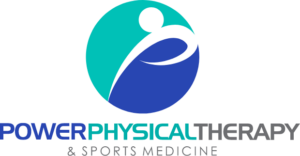Herniated Discs: This Could be the Cause of Your Back Pain

Back pain is the most commonly reported area of pain across the nation. Your spine works hard throughout the day and sometimes even small movements can result in pain if there are underlying issues occurring. Your spine is comprised of 26 bones, all cushioned by gel-like discs. These discs provide flexibility to the spine, but they can sometimes slip out of place, or “herniate,” resulting in pain around the nerves.
If you are experiencing back pain, there is a chance you may have herniated a disc. For more information about herniated discs and scheduling an evaluation with a physical therapist at Power Physical Therapy and Sports Medicine, give our office a call today.
How can I know if I have a herniated disc?
The location of the pain can sometimes determine whether or not it is stemming from a herniated disc. Pain from herniated discs typically occurs in the lower back, and can spread to the buttocks and calves. Simple everyday movements, such as sitting or sneezing, can cause the pain to flare up, as pressure is being put onto the pinched nerves.
Your primary physician will diagnose you with a herniated disc and will likely refer you to a physical therapist for treatment. You may undergo some diagnostic tests, such as x-rays, CT scans, MRIs, myelograms, or electromyograms, in order to determine if you do indeed have a herniated disc.
A CT scan will provide images to your doctor by taking several pictures of the spinal cord from different angles. An MRI creates 3D images of the spinal cord that are helpful in detailing where the pain is coming from. A myelogram highlights the spinal cord by injecting dye into the spinal fluid and then taking an x-ray of the spine. An electromyogram helps in determining whether any of the nerves are compressed or damaged by placing a needle electrode into the muscle.
How will physical therapy look?
If you are suffering from a herniated disc, your physical therapist will first conduct a physical evaluation to determine the extent of your physical abilities. A treatment plan will then be created specifically for you and your personal needs. This will typically include an arrangement of stretching and strengthening exercises, aimed at relieving your pain and enhancing the natural healing process of your body.
Other specialized treatments may be added into your plan as your physical therapist deems fit, such as ice and heat therapies, massage therapy, ultrasound, and electrical muscle stimulation (EMS). The primary goal of physical therapy treatments is to get you back to your normal physical function.
Ice therapy can be used to reduce inflammation, while heat therapy can be used to alleviate pain and stimulate healing. Massage therapy also helps to relieve pain by massaging the muscles and tissues that surround the affected area. This increases blood flow, loosens muscles, and enhances the healing process. EMS works by blocking pain signals from entering your brain. It also increases the production and release of endorphins throughout your body, which act as natural painkillers.
Contact us today to find relief for your herniated disc:
Physical therapy is a holistic, noninvasive approach to pain relief. It has been proven to help with several limiting conditions, including herniated discs. In many cases, physical therapy treatments alone can eliminate the need for surgical procedures or harmful drugs.
If you are suffering from a herniated disc, or you’d like to come in for an evaluation, schedule an appointment with one of our physical therapists in Costa Mesa, CA today. Our team will help you take the first steps toward long-lasting relief and recovery.
